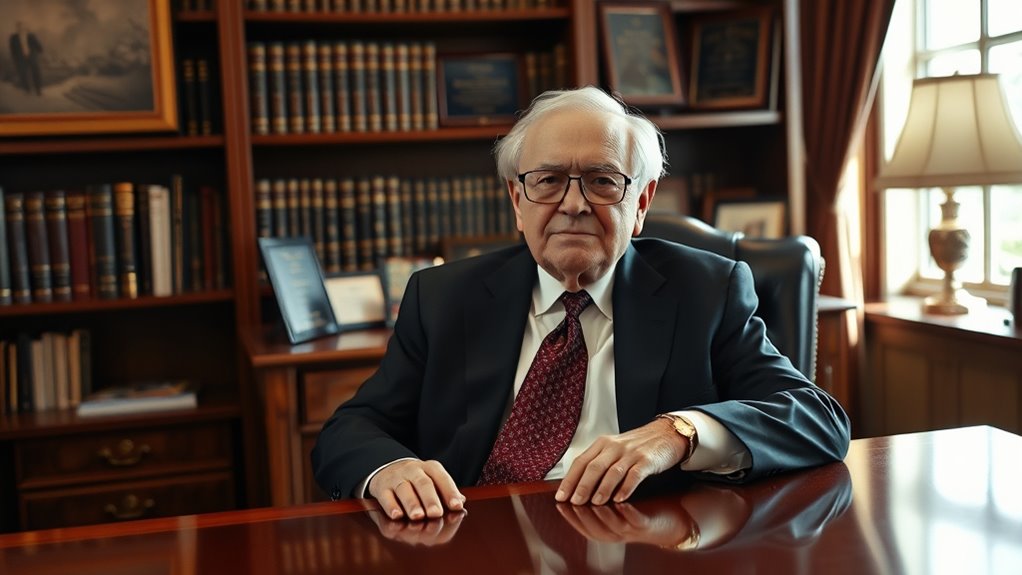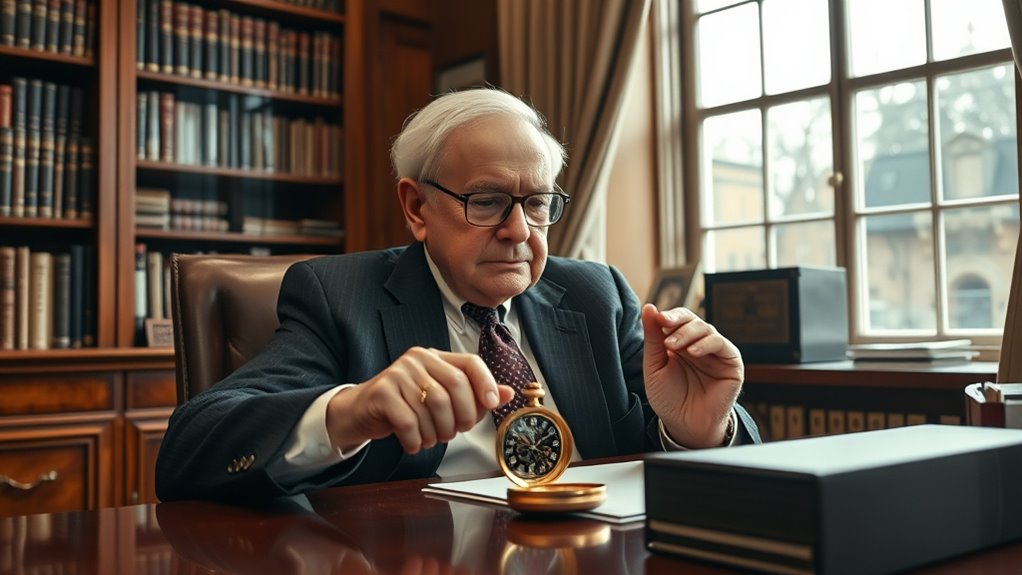Warren Buffett’s famous saying, “price is what you pay, value is what you get,” highlights that you shouldn’t focus solely on stock prices. Instead, you should evaluate a company’s true worth based on its fundamentals, like earnings, assets, and growth potential. By paying less than the intrinsic value, you increase your chances of long-term profits. If you want to understand how to identify those opportunities, there’s more to uncover about this disciplined approach.
Key Takeaways
- Warren Buffett emphasizes that stock price reflects market valuation, not the intrinsic worth of a company.
- He advocates for focusing on a company’s true value rather than short-term market fluctuations.
- Buffett advises buying stocks when market price is below intrinsic value, ensuring a margin of safety.
- He warns against paying high prices during market booms, stressing patience for better entry points.
- The core message is to consider what you truly get (intrinsic value) rather than what you pay (market price).

Warren Buffett famously emphasizes that “price is what you pay, value is what you get,” reminding investors to focus on the true worth of a company rather than its market fluctuations. This quote encapsulates the core principle of value investing, where the goal is to identify undervalued stocks based on their intrinsic worth rather than short-term market movements. When you approach investing with this mindset, you recognize that market valuation can be misleading—sometimes a stock appears expensive simply because the broader market is high, not because the company’s fundamentals have changed. Buffett’s strategy teaches you to look beyond the current share price and evaluate whether the company’s actual value justifies its market price.
In value investing, you’re encouraged to assess a company’s financial health, competitive advantages, and growth prospects to determine its true worth. Instead of reacting to price swings driven by market sentiment, you analyze the business’s earnings, assets, and management quality. This approach involves patience and discipline, as you wait for the market to recognize the company’s real value, often resulting in buying stocks at less than their intrinsic worth. By doing so, you position yourself to earn solid returns over the long term, even if the market temporarily undervalues or overvalues the stock.
Understanding market valuation is essential because it influences your investment decisions. If you focus solely on current market prices, you risk overpaying for a company that’s temporarily popular or undervaluing one that’s out of favor but fundamentally sound. Recognizing the importance of intrinsic value helps you make more informed choices and avoid emotional reactions to market fluctuations. Buffett’s insight guides you to compare the market valuation of a company with its intrinsic value, which you estimate through careful analysis. When the market price is markedly below your calculation of intrinsic value, it presents a buying opportunity. Conversely, if a stock’s price exceeds its true worth, it’s wise to hold off or consider selling.
Frequently Asked Questions
How Does Buffett Determine a Company’s Intrinsic Value?
You determine a company’s intrinsic value through intrinsic valuation by analyzing financial metrics like earnings, cash flow, and growth potential. You focus on understanding the company’s true worth based on its fundamentals rather than market price. By evaluating these financial metrics, you estimate the long-term value, helping you decide if the current price offers a good investment opportunity. This approach ensures you make informed, value-driven investment decisions.
What Industries Does Buffett Prefer for Investment?
Think of Buffett’s preferred industries as sturdy oak trees—deep roots represent strong competitive advantages, while branches show industry trends. He favors sectors like consumer goods, finance, and healthcare, where stability and predictable growth thrive. These industries typically demonstrate solid fundamentals and long-term resilience. By focusing on such sectors, you align your investments with businesses that have enduring competitive advantages, increasing your chances of sustainable success even amidst changing industry trends.
How Does Buffett Handle Market Volatility?
You should focus on market sentiment and avoid short-term trading when handling volatility like Buffett. He remains calm during market fluctuations, viewing dips as opportunities rather than threats. By sticking to your long-term investment strategy and not reacting impulsively to short-term changes, you can manage volatility effectively. Buffett’s approach emphasizes patience and discipline, helping you avoid making emotional decisions based on market noise.
What Is Buffett’s Approach to Risk Management?
You should focus on managing risk by avoiding behavioral biases like overconfidence and herd mentality. Buffett emphasizes the importance of portfolio diversification to spread out investments and reduce potential losses. Instead of chasing quick gains, stay disciplined and invest in quality businesses. By doing so, you minimize risks and build a resilient portfolio, ensuring you’re prepared for market fluctuations and long-term success.
How Does Buffett’s Investment Strategy Evolve Over Time?
Your investment strategy evolves by embracing experience, examining market psychology, and refining your focus on value investing. As markets shift and surprises surface, you adapt your approach, balancing boldness with patience. You stay vigilant, recognizing opportunities in downturns while avoiding impulsive decisions. Over time, you learn to leverage lessons, steadily strengthening your strategy, ensuring you stay aligned with your core principles, even as market dynamics dance around you.
Conclusion
Remember, in investing, the price you pay is like the ticket to a grand adventure. If you pick wisely, you’re setting yourself up for a journey filled with potential and growth. Don’t let the shiny surface fool you—look beyond the glitter to find true value. When you focus on what’s beneath the price tag, you’re steering your ship toward wealth’s treasure. Keep your eyes sharp, and let patience be your trusted compass.
Joy, as our Editor in Chief, ensures the highest standard of content. Her talent in writing is complemented by her attention to detail and passion for literature and culture. Joy’s expertise and love for the English language shine through in her editorial work, making each piece a testament to quality and clarity.









